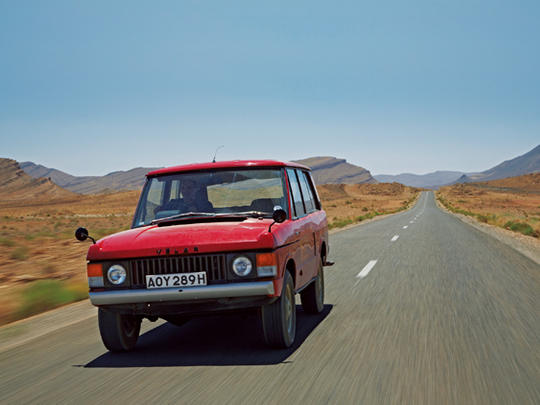
“It doesn’t look bad, does it,” says British TV presenter and motoring expert Quentin Wilson as we stand watching the extravagant launch of the new fourth-generation Range Rover. I’d agree if I could only take my eyes off actress, singer, model and all-round hotty, Holly Valance. She’s turned up to the VIP event of the iconic SUV wearing a leopard-print jumpsuit and there seem to be as many eyes on her as there are on the slim-line Rangey.
Dire Straits front man Mark Knopfler, comedian Jimmy Carr and the Queen’s eldest granddaughter Zara Phillips are among the stellar crowd in attendance at the swanky do held at the Royal Ballet School in Richmond, London. But for me, the star of the night is away from the glitz and the glamour, parked on the perfectly manicured lawn of White Lodge. Without it, there wouldn’t be any commotion here tonight. It’s the one that started the trend. It’s the first-generation Range Rover.
The Rover Company had been dabbling with a luxury SUV in the early Fifties, but the idea didn’t really take off. However, the project was revised by Charles Spencer King who, along with Gordon Bashford, came up with the first prototype in 1967. Company executives laughed at its boxy looks and it met with much scepticism, however it was put into production three years later.
Built between 1970 and 1996, the original was an on-road limousine and off-road mud-plugger, but it was still pretty basic fare. The three-door’s interior wasn’t exactly jaw droppingly beautiful; you didn’t get the quality of hides or wood and aluminium trim as you do today. It’d be hard to imagine any celebrity, no matter how low in the pecking order, would have turned up for its launch party.
Convenience features such as AC, power steering and carpeting were missing on the early models. But boasting a body-on-frame construction, coil springs and a 135bhp Rover V8, it was as rugged as they came (albeit, more sophisticated compared to the Land Rover) and matched that with a go-anywhere attitude, which made it a firm favourite with everyone from farmers to CEOs. It established itself as the undisputed leader of the four-wheel drive market and pioneered the use of dual-line servo-assisted braking with disc brakes all round.
In 1981, a five-door body was introduced and when fuel injection was added to the Buick-derived engine three years later, power jumped to 155 horses. By 1990, the motor had grown from a 3.5- to a 3.9-litre and it was bored out again two years later to 4.2 for the Vogue LSE, but overheating problems and electrical issues plagued the first-generation models, even though they looked pretty tough. Efforts were made to curtail the niggles such as the twin thermo fan technology, which helped dissipate heat from the engine better.
The diesels were exceptionally popular in the UK — in fact the 112bhp 2.4-litre turbodiesel broke a host of records, including fastest diesel SUV to reach 160kph. It was renamed the Range Rover Classic when the MKII rolled out in 1994 and after 317,615 units, production finally ceased in 1996.
They seem to have gained a somewhat unfair reputation over the years for being a bit of a money pit and that you need to go through 50 bad ones before you get lucky. But one of its advantages is its lack of sophistication compared to modern cars where you need an IT degree to diagnose that it’s out of fuel... Speaking of which, those old V8 petrols are quite thirsty and gulp around 16 litres-per-100km but on the plus side, you can pick them up from as little as Dh15,500. It might not be money well spent, but there aren’t many cheaper ways of owning such an iconic car.











